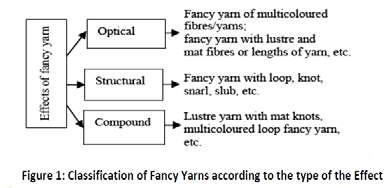C O V E R ST O R Y
9
FIBRES USED IN MAKING OF A SAREE Dr. N. N. MAHAPATRA Business Head (Dyes) SHREE PUSHKAR CHEMICALS & FERTILISERS LTD., MUMBAI Nature has everything that a man needs, be it food, clothes, techniques, and most importantly, ideas. Our ancestors wore clothes made out of natural fibers, of which Linen and Cotton were the most common ones. But with industrial aging, we developed new techniques to build yarns that produced longer-lasting synthetic fibers such as Nylon, microfibre, etc. How much ever we grow, humans have the tendency to stay connected with their roots. In spite of the hovering dusk at the natural weaving techniques in the mid 20th century, we have come a full circle now where our love for naturally available fibers such as jute, linen, bamboo, banana, java cotton, etc. has resurfaced. In fact, wearing the age-old handloom sarees made out of vegetable stalks has now become a style statement. Sarees crafted using yarns of natural fibers extracted from plants such as jute, bamboo, banana, hemp, aloe vera, etc. are called eco-friendly sarees. Each fabric made from these organic plants has a unique environmental quality that makes them nature-friendly. For instance, jute fibers are 100% processable, and there is no window of wastage when you yarn a saree out of this fabric. Similarly, other fibers have some properties that lend them the tag of being organic. New Age Eco Sarees are Indian drapes made of natural fibers which do not tend to harm our environment. The principle of using fibers extracted from natural plants to yarn a saree that is not polluted using pesticides and insec-
ticides has earned the process another name- Organic Sarees. Crafted using deft artisanship of the weavers, these sarees are known to have a longer life than the fabrics made of synthetic fibers using unreliable machinery. This aspect coined another name for the very same concept- sustainable sarees or fibers. With features like recyclability, no wastage of water for plant development, and availability of stalks in abundance, sarees yarned out of these fibers do not do any harm to the environment. And thus the name, eco-friendly sarees. These are some of the names used to refer to a naturally manufactured fabric which includes linen, jute, banana, bamboo, wild silk, and more. In 2011 a saree was weaved using 25 types of natural fibers and even made it into the Limca Book of Records. 1. Cotton- When comfort comes first, cotton is the primary choice. This saree fabric is so versatile that it can be worn both on an everyday basis and of course, on special occasions. From the office to weddings to festivals, cotton sarees remain the answer! 2. Silk - Silk, one of the oldest known fibers is a protein fiber, produced by the silkworm by spinning around its cocoon. The entire process of starting from the eggs till the worms are grown up and cocoons are formed as shown in the diagram below. The silk farmers let the caterpillars that make the largest cocoons, turn into moths. The moths then laid eggs and the eggs hatched out more caterpillars making even bigger cocoons. Over the centuries, the size of
the cocoon has increased and silkworm cocoons are now much bigger than the cocoons of other caterpillars. At least half a mile of continuous thread may come from one cocoon. The silk threads are then dipped in color liquid and used for preparing the colorful silk Saree. Chinese are the ones who started manufacturing silk sarees. Out of the numerous species of silk moths, scientists have enumerated about 70 silk moths which are of some economic value. The four commercially known varieties of natural silk are (1) Mulberry silk (2) Tasar or Oak Tasar silk (3) Muga silk and (4) Eri silk. Although the bulk of the world silk supply comes from the silk moth Bombyx Mori which is domesticated, the other varieties of silk are known as wild silk, as they are grown in remote forest trees in natural conditions. The silk sarees of India are among the living examples of the excellent craftsmanship of the weavers of the country. Their mastery lies in the creation of floral designs, beautiful textures, fine geometry, the durability of such work, and not the least, the vibrant colors they choose for making sarees. Many states in the country have their own variety of makes in silk as well as weaving centers with their traditional designs, weaving, and quality. The silk varieties are renowned by the place where it has been woven. Banaras is one of the leading silk weaving centers in India. Amru silk, Jamvar, Navarangi, Jamdani, etc. are the types of Banaras Saris, in which Amru Silk brocades with a heavy pallu
J U LY 2 0 2 1



















